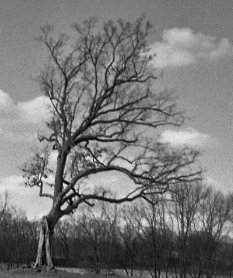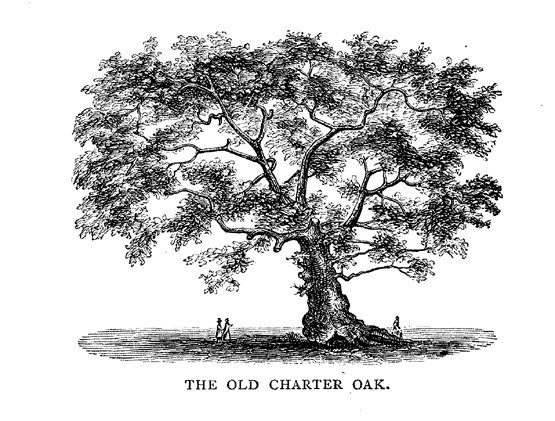The demise of the Shawshank Tree

On July 22nd, a Friday, in 2016, a photo appeared on the internet that shows the oak tree made famous with its role in the movie The Shawshank Redemption (1994).
Provided by Jodie Snavely (from the Mansfield and Richland County Convention and Visitors Bureau in Ohio), the photo depicts the tree, which is about 200-years-old, lying on the ground, felled by the high winds that ravaged Ohio the previous week.

The tree, which was already damaged in a storm in 2011, is a white oak (scientific name: Quercus alba). According to 20th-century naturalist, Donald Peattie, “If oak is the king of trees, as tradition has it, then the white oak, throughout its range, is the king of kings.” Evidently, many people agreed with that statement, as the white oak is now the state tree of Connecticut, Illinois, and Maryland.
Which is reasonable, because white oaks can grow between fifty and eighty feet high, with a spread between fifty to eighty feet wide. It takes a long time to for the trees to reach that size, however, as their growth rate is very slow. As the Shawshank Tree was one of the bigger specimens, it adds another layer of tragedy to its demise.
White oak was used with other types of oak to build the famous USS Constitution (also called, Old Ironsides) and was used during World War II for making the keels of minesweepers and patrol boats. Today, wineries and whiskey distilleries across the United States prefer white oak for their wooden barrels.

So, what about the movie? The Shawshank Redemption was based on the novella by author Stephen King, and according to the IMDB page, it tells the story of two imprisoned men who bond over a number of years. They find solace and, eventually, redemption through acts of common decency.
The original novella was published in 1982 and titled, Rita Hayworth and Shawshank Redemption: A Story from Different Season. It is subtitled Hope Springs Eternal, which according to one commenter on Goodreads.com “perfectly sums up the soul of the book.” In the movie version, Tim Robbins and Morgan star. It is under the tree that Freeman’s character finds an important letter buried by Robbin’s character. Without giving too much away, it is a pivotal moment in the movie.
Although the Shawshank Tree was located on private property, it could still be seen from a nearby state park. This is lucky, because the tree is on a list of stops — which span across north-central Ohio —that relate to the movie. It is evident from the photo that at least some fans, perhaps driven by their passion for the novella or film, have ignored the fact that the tree was on private property — a giant “No Trespassing” sign can be seen near the tree.
Jodie Snavely has said that the Mansfield and Richland County Convention and Visitors Bureau in Ohio have been notified about the Shawshank Tree’s predicament. With the popularity of both the novella and the film, it comes as no surprise that the office of the bureau has received a multitude of calls and messages from people who want to preserve the wood or repurpose it in some way.
So far, the owner has remained silent on the fate of the Shawshank tree, but Snavely has expressed her, and the bureau’s, hopes for the future. “We don’t know what’s going to happen to it,” she said Monday. “We hope the owner utilizes it for the good of the Shawshank fans.”
